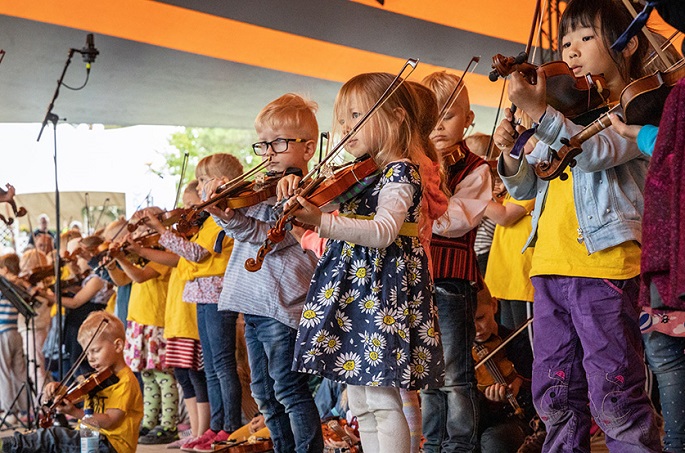Kaustinen, Nordic clinker boat added to UNESCO´s Cultural Heritage
Published : 15 Dec 2021, 21:59
Updated : 15 Dec 2021, 22:02
UNESCO’s Intergovernmental Committee on Wednesday inscribed Kaustinen folk fiddle playing to its Representative List of Intangible Cultural Heritage of Humanity.
The committee took the decision at its ongoing meeting in Paris, said the Ministry of Education and Culture in a press release.
The Nordic clinker boat tradition, which Finland proposed for inscription together with the other Nordic countries, was also inscribed.
Currently, UNESCO’s lists of intangible cultural heritage include more than 600 elements from around the world.
Finland’s first element on the lists is the sauna culture, which was inscribed in December 2020. Now, the list will be complemented with Kaustinen fiddle playing.
Hundreds of people in the small town of Kaustinen play the Kaustinen fiddle and engage in activities related to it.
One important reason why this tradition has been so successfully passed on from generation to generation is the internationally acclaimed method of näppäri pedagogics. These days, the Kaustinen Folk Music Festival is the most important Finnish folk music festival.
More than 4,000 performers, both professionals and amateurs, participate in the event every year.
Finland is also a partner in an inscription concerning Nordic clinker boat tradition.
Clinker boats have been used in the north for thousands of years, and they have been very important to maritime transport in all the Nordic countries. To this day, hundreds of thousands of these wooden boats can be found on the shores of Finland, where they are used for fishing, sailing and rowing. However, these days Finland only has around 50 professional boat builders.
This multinational tradition was inscribed to the list at the Paris meeting on Tuesday.
The Pan-Nordic application process was coordinated by Norway, and the participants included all of the Nordic countries, as well as Åland and Faroe Islands.
“In many ways, intangible cultural heritage is a foundation for our cultures. The UNESCO lists illustrates the great diversity of living heritage. The Kaustinen folk fiddle playing, which is now included on the list, is a perfect example of a living and prosperous cultural heritage in Finland together with our sauna tradition, which was inscribed to the list earlier. Humanity also shares many skills and knowledge. A good example of this is the pan-Nordic clinker boat tradition. I’m delighted to see that people are more interested in intangible cultural heritage and value it more than before,” said Minister of Science and Culture Antti Kurvinen.


